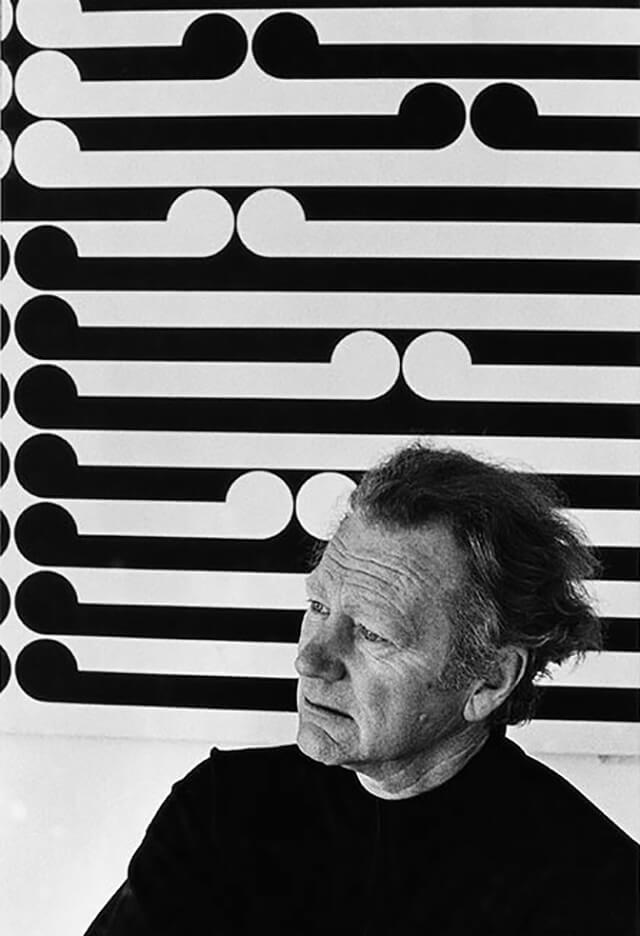
Gordon Tovey, artist and educator. Still from HeART of the Matter, supplied by Jan and Luit Bieringa.
Born in Wellington in 1901, from an early age Gordon Tovey’s imagination was fired by myths and legends, encouraged by his Irish mother and artistic aunt, and a more philosophically inclined postmaster father. From these somewhat ordinary, but also extraordinary beginnings, Gordon was to become one of the most influential people in the history of New Zealand education, and to lead a revolution in the teaching of art and craft in schools in New Zealand and the South Pacific.
Gordon’s art career began in 1921, in the College of Creative Arts’ former home in the Wellington Technical College School of Art, where he was taught by English artist H. Linley Richardson and where he befriended fellow student Len Lye. Tovey and Lye shared a common philosophy about the purposes of artistic expression, firmly believing in art as an intuitive, expansive and inclusive practice that transcended cultures, genres and subjects.
Gordon painted and wrote throughout his career, with early works accepted by the NZ Academy of Fine Art and his first job was as a senior artist with NZ Railways Studios. As a young man he travelled to London where he pursued his study of the psychology of art at St Martin’s in the Field, taking a position in an advertising firm where he gained recognition for a series of posters for the Southern Railway. Soon after, he met his wife Heather, and they returned to New Zealand together in 1930.
Times were hard but in 1932 Gordon was invited to a position at the Dunedin Art School, where he forged alliances with Canadian artist Charlton Edgar and R. N. Field and kept himself well-informed about contemporary European art movements like the Bauhaus, Dada and Surrealism. Gordon and Heather had their only child, Carol who is here tonight with her family.
By 1936 Gordon was head of the art department in Dunedin, where his influence on some of New Zealand’s most renowned artists such as Doris Lusk, Alan Howie, and Colin McCahon began in earnest. His enduring belief in the importance of fostering children’s creativity and the role of the teacher in facilitating this led him to take up a position in the art department of the Dunedin Teachers College in 1941.
Gordon worked hard to change the fundamental way that art was taught in schools, and benefitted from the receptiveness of the reformist educational and political context under Education and then Prime Minister Peter Fraser and the 1935-1949 Labour Government.
In 1946 the Director General of Education Dr Clarence Beeby appointed Gordon as the first National Supervisor of Art and Craft, a position he maintained for over twenty transformative years. While Beeby was a strong advocate for equal access to the arts for all, few of his contemporaries appreciated his long-term vision.
Insights Gordon gained about teaching traditional arts and crafts in Samoa and the Cook Islands were put to good use in New Zealand where there were growing concerns about the achievement standards and well-being of Māori students. Gordon wanted students to gain an appreciation of art from both Māori and Pakeha perspectives and ensured young Māori artists were trained as arts advisors alongside their Pakeha counterparts.
He also encouraged the teachers to be engaged in their own creative practice, and established mentoring programmes for the arts advisors, many of whom were first generation contemporary Māori artists like John Bevan Ford, Sandy Adsett, Cliff Whiting and Para Matchitt.
In 1954 Gordon persuaded the Ministry to trial a scheme called the Northern Māori Project, using diverse creative programmes and encouraging community engagement. This led to the landmark Māori Arts and Crafts course in Ruatoria in 1961, the culmination of many of Gordon’s hopes and aspirations.
For the Ruatoria course Gordon included Māori leaders like Ngati Porou carver Pine Taiapa to run workshops alongside arts advisors Ralph Hotere, Whiting and Matchitt, ultimately securing the endorsement of Māori art and crafts teaching in schools for the benefit of both Māori and Pakeha children.
The Department of Arts and Crafts also realised another of Gordon’s visions, the publication of a series of educational booklets with supplementary films, recordings and courses which ensured creativity, and in particular Māori arts and crafts, permeated the New Zealand school curriculum. These books included ‘Art and Craft for the South Pacific’, ‘The Arts of the Māori’, and ‘The Arts of New Zealand Children’.
At his funeral in 1974 Clarence Beeby, who had appointed him 30 years earlier ‘to try to establish the intellectual respectability of the frills in education’ paid tribute to his achievements when he said,
When Gordon came to the Department of Education, classrooms were drab and colourless. When he left they were ablaze with colour, buzzing with activity and alive with crafts.....Two generations of New Zealanders have reason to be grateful to him and their children’s children will bear some imprint of his hand, though they may never hear his name.
More Art stories

Art
E. Mervyn Taylor
Mervyn dedicated his life to being both an artist and a communicator; bringing art close to people. He was of a generation that wanted to cast off colonialism and discover a way to see the world and interpret its character from a South Pacific perspective.

Art
Gordon Walters
Gordon’s iconic, and at times controversial, contribution to New Zealand culture is largely due to his synthesis of Māori and European symbols through geometric abstraction.

Art
Guy Ngan
Guy Ngan is described as one of New Zealand’s most prolific artists, with many large-scale public artworks located throughout the country.